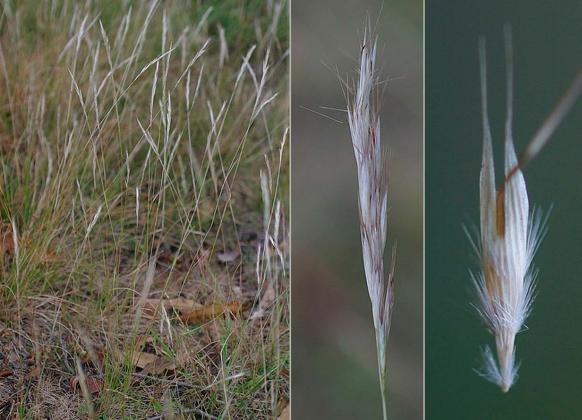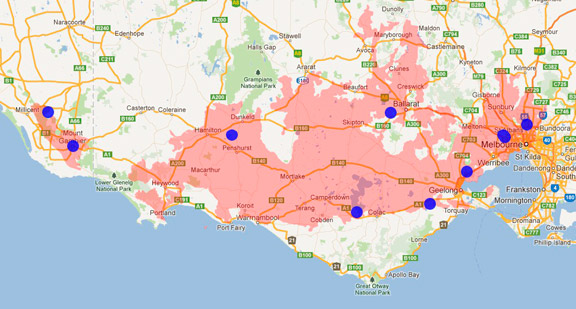A range of teacher professional learning programs will be developed to accompany the Biodiversity of the Western Volcanic Plains online outreach...

Striped Wallaby-grass
Rytidosperma racemosum var. racemosum
Perennial. Can become common in disturbed habitats. Usually grows in lightly shaded habitats, often found under trees. Often found growing with other Wallaby-grasses and Weeping Grass. The seeds are eaten by birds including the Red-browed Finch and Red-rumped Parrots.
| Details | Description |
| Type | Graminoid |
| Group | Grass |
| Former Scientific Name | Austrodanthonia racemosa var. racemosa |
| Identifying Characteristics | |
| Distinctive Features | Striped Wallaby-grass has very fine seed stems with narrow seed heads. The individual seeds are thinner than those of other Wallaby-grasses. |
| Life Form Group | Graminoid |
| Life Form Codes | Medium to Small Tufted Graminoid (MTG) |
| EVC types | EVC 125: Plains Grassy Wetland EVC 55_61: Plains Grassy Woodland EVC 55_63: Higher Rainfall Plains Grassy Woodland EVC 68: Creekline Grassy Woodland |
| Native Status | Native to Australia |
| Taxonomy | |
| Phylum | Charophyta |
| Class | Equisetopsida |
| Order | Poales |
| Family | Poaceae |
| Genus | Rytidosperma |

Distribution maps indicate current and historic locations where species have been sighted.
Source: Atlas of Living Australia
| Endangered Status | |
| DEPI Advisory List | Not listed |
| FFG Act | Not listed |
| EPBC Act | Not listed |
The conservation status of species is listed within Victoria and Australia.
The Department of Environment and Primary Industry (DEPI) Advisory List consists of non-statutory advisory lists of rare or threatened flora and fauna within Victoria.
The Flora and Fauna Guarantee Act 1988 (FFG Act) lists threatened species in Victoria. Under the Act, an Action Statement is produced for each listed species.
The Environment Protection and Biodiversity Conservation Act 1999 (EPBC Act) is the Australian Government’s key piece of environmental legislation, listing nationally threatened native species and ecological communities.



